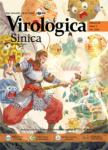RNA viromes of Dermacentor nuttalli ticks reveal a novel uukuvirus in Qinghai Province,China
作者机构:Key Laboratory of Special Pathogens and Biosafety and National Virus Resource CenterWuhan Institute of VirologyChinese Academy of SciencesWuhan 430071China University of Chinese Academy of SciencesBeijing 101408China Qinghai Lake National Nature Reserve AdministrationXining 810000China Hubei Jiangxia LaboratoryWuhan 430200China Xinjiang Key Laboratory of Vector-borne Infectious DiseasesUrumqi830002China
出 版 物:《Virologica Sinica》 (中国病毒学(英文版))
年 卷 期:2024年第39卷第4期
页 面:537-545页
核心收录:
学科分类:1007[医学-药学(可授医学、理学学位)] 100705[医学-微生物与生化药学] 1001[医学-基础医学(可授医学、理学学位)] 100103[医学-病原生物学] 10[医学]
基 金:supported by the National Key R&D Program of China(2022YFC2305100,2021YFC2300900) the Key Deployment Projects of the Chinese Academy of Sciences(KJZD-SW-L11) the Youth Project of the Wuhan Institute of Virology,Chinese Academy of Sciences(2023QNTJ-03) the Biological Resources Program,Chinese Academy of Sciences(KFJ-BRP-017-74) the National Basic Science Data Sharing Service Platform(NBSDC-DB-13)
主 题:Dermacentor nuttalli Qinghai Province Virome Uukuvirus M segment
摘 要:Ticks are a major parasite on the Qinghai-Tibet Plateau,western China,and represent an economic burden to agriculture and animal *** research on tick-borne pathogens that threaten humans and animals,the viromes of dominant tick species in this area remain *** this study,we collected Dermacentor nuttalli ticks near Qinghai Lake and identified 13 viruses belonging to at least six families through metagenomic *** viruses were of high abundance in pools,including Xınjiang tick-associated virus 1(XJTAV1),and three novel viruses:Qinghai Lake virus 1,Qinghai Lake virus 2(QHLV1,and QHLV2,unclassified),and Qinghai Lake virus 3(QHLV3,genus Uukuvirus of family Phenuiviridae in order Bunyavirales),which lacks the M *** minimum infection rates of the four viruses in the tick groups were 8.2%,49.5%,6.2%,and 24.7%,respectively,suggesting the prevalence of these viruses in *** ticks.A putative M segment of QHLV3 was identified from the next-generation sequencing data and further characterized for its signal peptide cleavage site,N-glycosylation,and transmembrane ***,we probed the L,M,and S segments of other viruses from sequencing data of other tick pools by using the putative M segment sequence of *** revealing the viromes of *** ticks,this study enhances our understanding of tick-borne viral communities in highland *** putative M segment identified in a novel uukuvirus suggests that previously identified uukuviruses without M segments should have had the same genome organization as typical *** findings will facilitate virus discovery and our understanding of the phylogeny of tick-borne uukuviruses.



